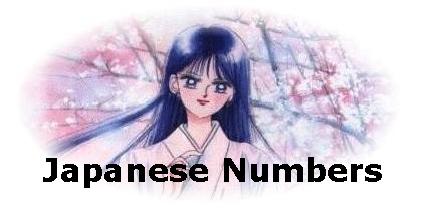|
| 
zero--> rei (different than Rei-chan!) one--> ichi two--> ni three--> san four--> shi/yon five--> go six--> roku seven--> shichi/nana eight--> hachi nine--> ku/kyuu ten--> juu
Now, this is pretty easy to catch on to. First, you take juu, which is ten. Then add the corresponding number. So if you want to say 11, combine juu, which is ten, and ichi, which is one. So you got juuichi. See? I told ya it was easy! So that means twelve is juuni, thirteen is juusan, fourteen is juushi and so on.
Counting from 20 to 99!
Now it manages to get even easier! Lets use 23 as our example. First you take ni for the two and add juu. Then you add san for the three. So all together its nijuusan. So, that would mean 87 is hachi (eight), juu (ten), and nana (three), all together hachijuunana. Got it? Good!
Counting from 100 up!
Here's a list of all the terms used for 100 and up. Simply add them to the front of the terms. So 123 is hyakunijuusan. 100--> hyaku 200--> niyaku 300--> sanbyaku 400--> yonhyaku 500--> gohyaku 600--> roppyaku 700--> happyaku 800--> kuyaku 900--> kyuuhyaku 1,000--> sen 2,000--> nisen 3,000--> sanzen 4,000--> yonsen 5,000--> gosen 6,000--> roksen 7,000--> nansen 8,000--> hassen 9,000--> kyuusen ~~~~~~~~~~~~~~~~~~~~~~~~~~~~~ |